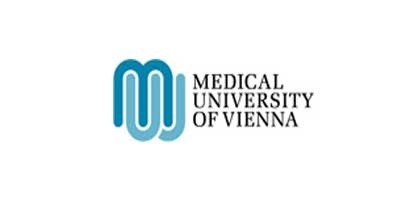 VIENNA MEDICAL UNIVERSITY - PEDIATRIC AND YOUTH HOSPITAL
VIENNA MEDICAL UNIVERSITY - PEDIATRIC AND YOUTH HOSPITAL
Summary of the Baby-Vac's performance
Test period: February and March 2005
Institution and officials in charge:
Pediatric and Youth Hospital, Professor Dr. Arnold Pollak and Professor Dr. Dieter Koller
Subjects:
31 children aged 1 month to 12 months (representative sampling for the group aged 0 to 6 years)
15 children received standard treatment (Otrisal administered 6 times a day)
16 children treated with the Baby-Vac™ in addition to specialist treatment (nasal secretion extracted 4 to 5 times a day)
Observation period: 5 days
The test was performed by Professor Dr. Arnold Pollak and Professor Dr. Dieter Koller at the Pediatric and Youth Hospital in February and March 2005. The test was aimed to assess the way in which the new Baby-Vac™ distributed in Austria would perform concerning children's cold. The course of the cold was observed in a total of 32 children aged 1 month to 12 months. The questionnaire was returned by 31 parents (97%). The physicians applied the classical treatment, i.e. they administered Otrisal 6 times a day to each child. In the case of 16 children (50% of the patients) they prescribed for parents the use of the Baby-Vac™ 4 to 5 times a day.
The questionnaire included the following items:
How did your child's nose get stopped?
Does your child drink well?
Does your child sleep well?
The observation period lasted 5 days. On Day 1 a question was asked about the subjects' condition, and then this was repeated 2 and 5 days later.
The observation period yielded the following results:
Question 1: How did your child's nose get stopped?
As had been expected, nasal obstruction was curable with increasing ease during the observation period. No material difference was identified between both therapies. The Baby-Vac™ proved to be as efficient in the treatment of cold as the classical therapy.
Note, however, that whenever babies and toddlers catch a cold, it is vital to remove their nasal secretion on a continuous basis to prevent any further diseases and complications. Since the observation period was limited to 5 days, there was no way to find out about long-term performance. Yet, it is right to suggest that the use of the Baby-Vac™ and keeping the nose unobstructed may reduce long-term adverse effects.
The observation period yielded the following results:
Question 2: The child's drinking habits
As is well-known, babies with an obstructed nose find it harder to breathe through the mouth. Since babies must breathe while drinking, nasal obstruction may largely affect their drinking. Consequently, a question was asked to find out about the children's drinking habits, general feeling, and free nasal breathing.
In this respect the performance of the Baby-Vac™ was found to be clearly positive. On Day 1 the average drinking habit ranked 5 on a scale of 10. As early as the beginning of therapy the Baby-Vac™ group showed clearly better drinking habits. By Day 3 this group had nearly attained 1 on a scale of 10 while the control group only attained that value 2 days later. On Day 5 the Baby-Vac™ group attained 0, the highest value.
This clearly demonstrates that the test group drank much better. In conclusion, these children feel better because of their unobstructed noses.
The observation period yielded the following results:
Question 3: The child's sleeping habits
Changes in children's sleeping habits were taken as a sign of improved breathing and general feeling because children normally sleep worse with breathing difficulties, and that is also responsible for parents' discomfort.
Once again the Baby-Vac™ performed much better than the classical treatment. On Day 1 both groups complained about children's bad sleep (scoring 8 on a scale of 10). As soon as Day 2 the test group's sleeping exceeded the average (scoring 4 on a scale of 10), and continued to improve up until Day 5, when it scored 1.
In this case, too, the control group only showed a slow improvement and reached 4 only 2 days later than the test group.
In summary, children slept better after using the Baby-Vac™.
The research report clearly points to the conclusion that the Baby-Vac™ has a positive effect on the treatment of children's cold. In general, children's breathing is improved after nasal secretion has been removed and their nostrils have become unobstructed. In addition, children drink much more and sleep better. Ultimately, this has a positive effect on parents' comfort.
The Baby-Vac™ improves breathing and the general feeling and prevents any further diseases.
The device is handy and comfortable for parents and highly efficient. The combination of vacuum cleaner and nose extractor is excellent in nasal cleaning.
The device is particularly suitable for the treatment of children aged 0 to 6 years and even premature babies once discharged from hospital.
Based on the test results we can recommend this device for use in hospitals, surgeries and at home as a supplement to specialist treatment.
Designed by Aeronstudio™